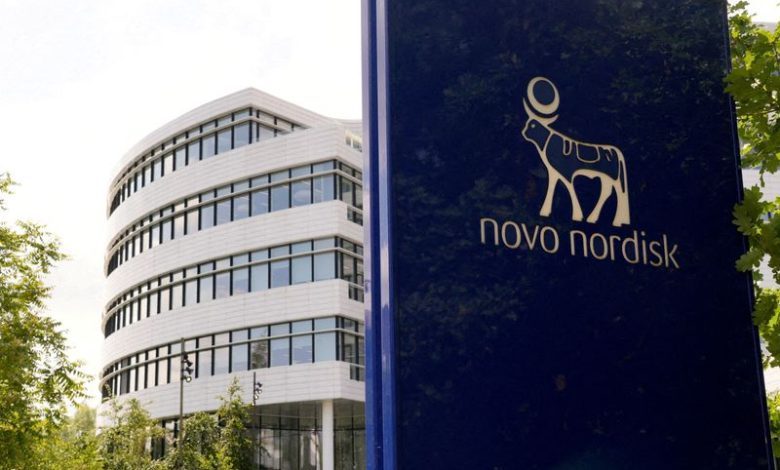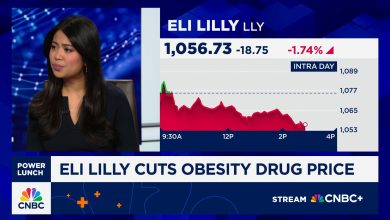Inside Novo’s $2.1 Billion Gamble on Omeros — What This Means for the Future of Medicine

On October 15, 2025, Novo Nordisk — the Danish pharmaceutical giant known globally for insulin and for turning GLP-1 drugs into a multibillion-dollar business — announced a definitive asset purchase and license agreement with Seattle-based Omeros Corporation for the clinical-stage MASP-3 inhibitor zaltenibart (OMS906). The headline number was eye-catching: up to $2.1 billion in total consideration, including about $340 million in upfront and near-term milestone payments, plus additional development and commercial milestones and tiered royalties. The deal instantly reshaped both companies’ market narratives and opened a window onto a recurring question in modern biopharma: what does it look like when a blockbuster-maker places a big bet on a niche, mechanistically sophisticated rare-disease asset?
The science behind zaltenibart, Novo’s strategic thinking, the risks involved, and why this kind of transaction may matter far beyond paroxysmal nocturnal hemoglobinuria (PNH) or any single rare indication.
The deal in a nutshell
Novo gains exclusive global rights to develop and commercialize zaltenibart — an investigational MASP-3 inhibitor that modulates the alternative complement pathway — across indications, while Omeros keeps certain non-zaltenibart MASP-3 programs and is eligible to receive $340 million upfront/near-term plus up to $2.1 billion in cumulative payments tied to clinical, regulatory and sales milestones, plus royalties. The companies said the transaction is expected to close later in 2025, subject to usual conditions. Omeros’ stock spiked sharply on the news, reflecting the market’s view of materially reduced execution risk for the asset.
Those financial terms matter because they show Novo is willing to tilt meaningful resources toward a single mechanism that may have broad applicability across complement-mediated blood and kidney disorders. But the dollars are staged — a common structure that shifts risk to the buyer while giving the seller near-term liquidity and upside if the science and market acceptance prove out.
Why MASP-3 and the complement pathway are hot
To appreciate the rationale for the deal, it helps to step back to immunology. The complement system is a set of proteins that helps the immune system identify and clear pathogens and damaged cells. But when complement activation runs amok, it can drive destructive inflammation and tissue injury — central features of diseases such as PNH, certain kidney disorders (including some forms of complement-mediated nephropathies) and other rare syndromes. Targeting complement has produced approved medicines already (the anti-C5 antibodies being the best-known example), but the pathway is complex and different nodes may offer distinct clinical and practical advantages.
MASP-3 (mannan-binding lectin serine protease-3) is upstream in a branch of the complement system and regulates activation of the alternative pathway through effects on factor D. Inhibiting MASP-3 could blunt pathological complement activation with a profile that might differ from C5 inhibitors — potentially improving durability, route of administration, safety, or activity in subgroups that respond poorly to existing drugs. Early clinical data presented by Omeros suggested zaltenibart had an encouraging safety and tolerability profile and preliminary signals in PNH, which made it attractive to a company like Novo that can both run late-stage trials at scale and push for expansion into additional indications.
Novo’s strategic play: diversification and platform leverage
Novo Nordisk’s core competency has for decades been metabolic disease — insulin, GLP-1 receptor agonists and more recently weight-management drugs that have transformed the company’s economics. But the GLP-1 era has also brought investor attention (and competitive pressure) that can make management eager to broaden risk across therapeutic areas and modalities. The Omeros deal fits a clear playbook: acquire promising, mechanism-driven assets in the rare-disease arena where clinical trials can be smaller, regulatory pathways may be accelerated, and pricing paradigms often support substantial returns if efficacy is strong.
Put differently, the deal allows Novo to leverage its commercial and regulatory muscle on a focused asset while dipping further into immunology — an area where biologic expertise and global development capabilities are valuable. For Omeros, the license brings resources and a partner capable of carrying an asset through Phase 3 and commercialization, while preserving some upside through milestones and royalties.
For patients and physicians: cautious optimism
For people living with PNH and other complement-mediated disorders, new therapeutic options are always welcome. Current standard treatments (notably the anti-C5 agents) are effective for many patients but have limitations — some patients have incomplete responses, others require frequent infusions, and access/affordability remain real-world constraints. A new oral or injectable therapy that meaningfully improves control of hemolysis, reduces transfusion needs, or offers a better safety/tolerability profile would be a significant advance.
That said, “encouraging” Phase 2 data are not the same as proven clinical benefit in larger, randomized trials. Patients and clinicians should expect an evidence-based progression: rigorous Phase 3 trials, regulatory review, and then real-world experience. Novo’s plan reportedly includes launching global development programs — but until pivotal data readouts are in hand, hope must be measured against scientific reality.
Market and competitive dynamics
The complement space is no longer niche in the sense of sparse competition — it’s an active battleground. Established players have C5 inhibitors; smaller companies are advancing novel complement modulators at different nodes and with different chemistries (small molecules, antibodies, RNA-based therapies). Novo’s entry with a MASP-3 inhibitor intensifies competition, but it also validates the therapeutic hypothesis and could accelerate interest and investment across complement research.
Commercially, rare-disease drugs often command high prices but also face payor scrutiny and access negotiations. Novo’s success will depend not just on efficacy but on differentiators (convenience, safety, broader indication coverage), manufacturing and supply reliability, and payor willingness to reimburse. The staged milestone payments in the deal reflect how both parties and the market recognize these downstream uncertainties.
Risks — scientific, regulatory, and financial
No deal of this size is without downside. Scientifically, the complement cascade is intricately balanced; off-target effects or unforeseen long-term safety signals can surface only in larger populations or longer follow-up. Regulatory agencies will demand rigorous efficacy and safety data; even in rare conditions, approvals can be delayed or limited by the quality of evidence. Financially, the “up to $2.1 billion” headline obscures the fact that most of that is contingent. If zaltenibart fails in a pivotal study, Novo’s cash exposure will be limited to the upfront and early milestones, while Omeros’ future hopes would dim.
There is also an organizational risk for Novo: rare disease development and commercialization require different approaches than mass-market metabolic drugs. Ensuring focused teams, appropriate headquarters-to-field coordination, and expert stakeholders engagement will be vital if the asset is to fulfill its potential.
What investors saw — and why stocks moved
The market reaction was swift. Omeros shares rallied dramatically — a common pattern when a small biotech with limited resources partners with or licenses to a global drugmaker. The premium reflects two real effects: immediate de-risking (near-term cash and resources) and the potential for larger, future payouts if the asset succeeds. Novo’s stock reaction was more muted, reflecting that the $2.1 billion headline is largely contingent and the company’s broader valuation is driven by its metabolic franchise.
More broadly, investors often interpret such deals as signals: big pharma or big biotech buying or licensing an asset validates the underlying science and sometimes catalyzes funding flows into similar approaches. That “validation effect” can accelerate innovation — but it can also concentrate attention and capital, potentially crowding smaller but worthy programs.
Broader implications for drug development
If zaltenibart ultimately proves safe and effective, the implications would go beyond a new treatment for PNH. Demonstrating that chronic or episodic disease driven by complement hyperactivation can be managed by MASP-3 inhibition would unlock a cascade of research into related kidney and inflammatory disorders. More practically, it would be a vindication of a strategy many large companies are pursuing: combine deep biologic insight with disciplined external sourcing (licensing or asset purchases) to accelerate entry into adjacent therapeutic areas.
This deal also underscores an accelerating theme in pharma: platform diversification. Companies with blockbuster products are compelled to redeploy cash into R&D and M&A to avoid single-driver risk. Rare disease assets are attractive precisely because they offer high value per patient, potential for expedited regulatory pathways, and the ability to build specialized commercial operations that can then be leveraged for other rare programs.
A word about ethics, access, and the pricing conversation
Rare-disease therapies pose thorny questions about pricing, access, and global equity. High price tags for small populations can be justified by development costs and value to patients, but they also risk putting lifesaving therapies out of reach for many health systems. Novo — with its expansive global footprint and recent scrutiny over GLP-1 pricing and access — will likely face questions from payors, governments, and patient groups about how zaltenibart, if approved, will be priced and distributed. How Novo navigates these conversations will affect not just uptake but public perception.
Final take: a calculated gamble that could reshape pockets of medicine
The Novo–Omeros deal is simultaneously bold and typical of 2020s pharma strategy: a bold headline number backed by staged payments that allocate risk, and a typical playbook of buying into highly mechanistic rare-disease assets to diversify pipelines. For Novo, the upside is clear — a successful MASP-3 inhibitor could add a lucrative, scientifically differentiated product to its portfolio and extend its reach into immunology. For Omeros, the partnership transforms an ambitious but resource-limited development program into one with the backing of a global powerhouse.
But this is a long game. Science has to be proven in pivotal trials, regulators must be satisfied, payors must agree to reimbursements, and physicians must find a place for the drug in the treatment armamentarium. The $2.1 billion figure tells you how valuable success might be; the seed of value is scientific. If the biology bears out, patients with complement-mediated diseases could gain a new therapeutic option — and the industry will have another example of how targeted immune modulation can be turned into real treatments. If the biology disappoints, the structured terms of the deal mean losses are limited and the broader lesson — that careful sourcing of external innovation is a rational strategy for large companies — will still stand.
At a moment when a handful of companies dominate headlines for metabolic breakthroughs, Novo’s $2.1 billion wager on Omeros shows how the future of medicine is being written on multiple fronts: metabolic care, immunology, and rare diseases. Each front has its own risks and rewards, but together they reflect a new, pluralistic era in drug development where mechanistic insight, capital allocation, and strategic partnerships determine which scientific ideas become medicines.




